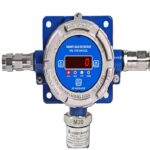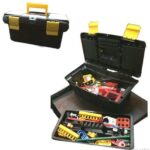Your list is empty, add products to the list to send a request
What is a Conventional Fire Alarm System?

13
Aug
A conventional fire alarm system is one of the most widely used fire detection solutions for small and medium-sized buildings. It divides a property into zones, each connected to detectors, call points, and sounders. When a fire is detected, the system identifies the affected zone so occupants can take action quickly.
This type of system is known for its simplicity, cost-effectiveness, and compliance with fire safety regulations—making it a trusted choice in many commercial and residential settings.
How a Conventional Fire Alarm System Works
In a conventional fire alarm system, each zone has its own wiring circuit connected to the main control panel. When a detector or manual call point is triggered, the panel lights up the corresponding zone indicator and activates the alarms.
Key points about the working principle:
- Each zone is monitored separately.
- The system shows the general area of the fire but not the exact device.
- Fire alarms and sounders are activated for the whole building or specific areas.
Components of a Conventional Fire Alarm System
A typical conventional system includes:
- Control Panel – The main hub that processes alarm signals and displays zone status.
- Manual Call Points (MCPs) – Break glass units for manual activation.
- Smoke & Heat Detectors – Devices that sense fire conditions.
- Sounders & Visual Alarms – Audible and visible signals to alert occupants.
- Power Supply – Ensures operation during power failures, often with backup batteries.
One example is the Ravel RE-9016 Conventional Fire Alarm Panel, which offers reliable zone-based detection for medium-sized buildings.
Benefits of Using a Conventional Fire Alarm System
1. Cost-Effective – Ideal for projects with budget constraints.
2. Simple to Install – Straightforward wiring and configuration.
3. Easy Maintenance – Simple to test, repair, or replace components.
4. Reliable Operation – Proven technology widely accepted in the industry.
Best Applications for a Conventional Fire Alarm System
Conventional systems are most suitable for:
- Small to medium-sized offices
- Schools and colleges
- Retail shops
- Small apartment blocks
- Warehouses with open layouts
If the property layout is simple and zone-based identification is sufficient, a conventional system is often the best value choice.
Conventional vs Addressable Fire Alarm Systems
| Feature | Conventional System | Addressable System |
| Detection Level | Zone-based | Device-specific |
| Cost | Lower upfront cost | Higher initial investment |
| Wiring | Separate circuit per zone | Loop wiring for all devices |
| Maintenance | Simple | More technical expertise needed |
| Scalability | Limited | High |
For buildings with complex layouts or high occupancy, an addressable system might be more suitable.
Installation Tips for a Conventional Fire Alarm System
- Plan zones based on building layout and fire risks.
- Place detectors in all required areas according to regulations.
- Use certified fire alarm cables and components.
- Test the system after installation and provide user training.
Common Issues and How to Avoid Them
False alarms – Often caused by dust in detectors; regular cleaning is essential.
Zone wiring faults – Ensure proper cable routing and secure connections.
Battery failures – Replace backup batteries regularly to maintain system readiness.
Frequently Asked Questions
1. How to test a conventional fire alarm system?
Activate a manual call point or detector in each zone to confirm alarms and indicators are working. Always record test results in a maintenance log and reset the system after testing.
2. What grade is a conventional fire alarm system?
Grades vary depending on the application. In many commercial and public buildings, conventional systems meet the required grades for non-complex premises as outlined in BS 5839.
3. What are L1, L2, and L3 fire alarm systems?
These are fire alarm categories under BS 5839:
- L1 – Maximum life protection with detectors in all areas.
- L2 – Detectors in escape routes and high-risk areas.
- L3 – Detectors in escape routes and rooms opening onto them.
Final Thoughts & Call to Action
A conventional fire alarm system is a dependable, cost-effective choice for many buildings. Its straightforward design makes it ideal for sites where pinpoint accuracy isn’t critical, but reliable fire detection is.
If you’re looking for a robust and compliant option, the Ravel RE-9016 Conventional Fire Alarm Panel is an excellent choice.
Contact us today to discuss your fire safety needs and get the right system for your building.



























